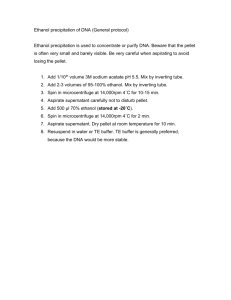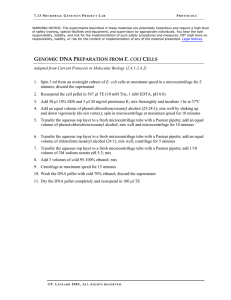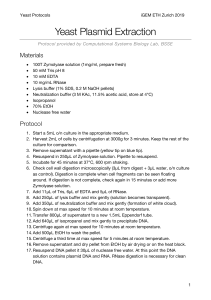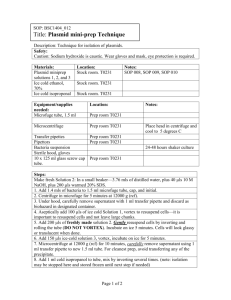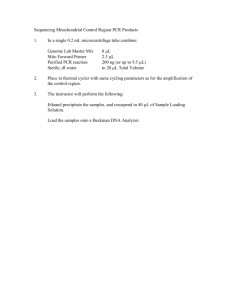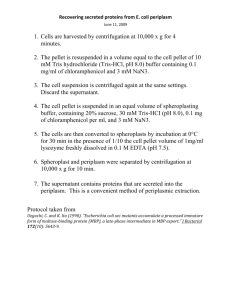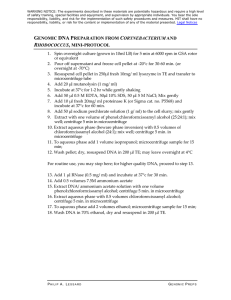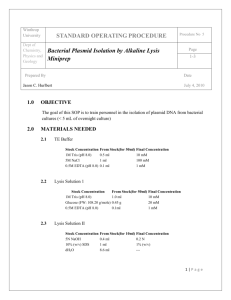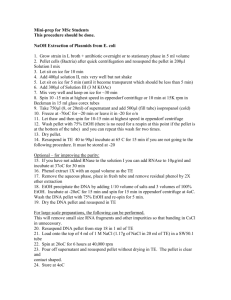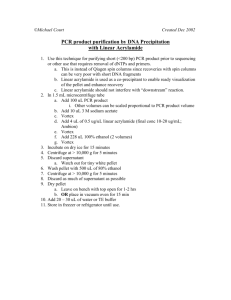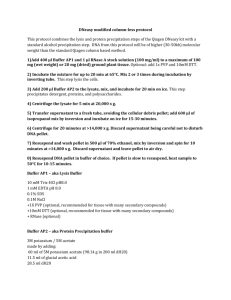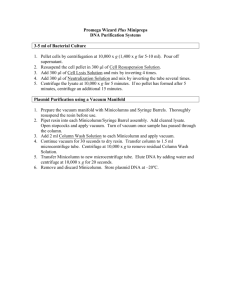Preparation of plasmids by alkali lysis
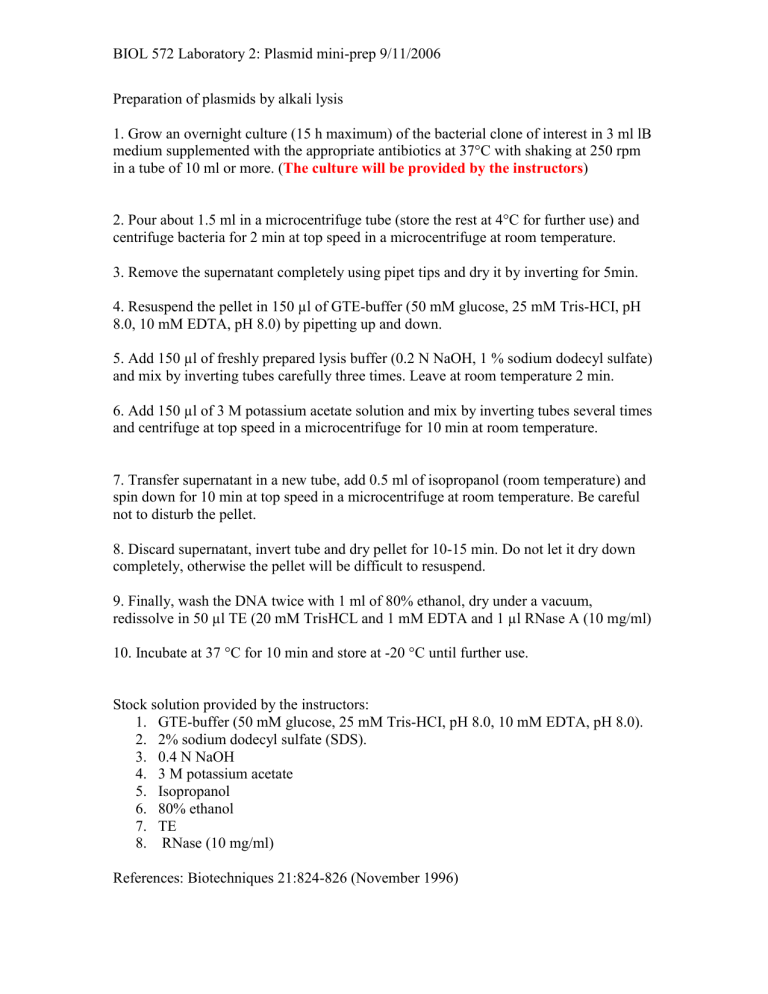
BIOL 572 Laboratory 2: Plasmid mini-prep 9/11/2006
Preparation of plasmids by alkali lysis
1. Grow an overnight culture (15 h maximum) of the bacterial clone of interest in 3 ml lB medium supplemented with the appropriate antibiotics at 37°C with shaking at 250 rpm in a tube of 10 ml or more. ( The culture will be provided by the instructors )
2. Pour about 1.5 ml in a microcentrifuge tube (store the rest at 4°C for further use) and centrifuge bacteria for 2 min at top speed in a microcentrifuge at room temperature.
3. Remove the supernatant completely using pipet tips and dry it by inverting for 5min.
4. Resuspend the pellet in 150 µl of GTE-buffer (50 mM glucose, 25 mM Tris-HCI, pH
8.0, 10 mM EDTA, pH 8.0) by pipetting up and down.
5. Add 150 µl of freshly prepared lysis buffer (0.2 N NaOH, 1 % sodium dodecyl sulfate) and mix by inverting tubes carefully three times. Leave at room temperature 2 min.
6. Add 150 µl of 3 M potassium acetate solution and mix by inverting tubes several times and centrifuge at top speed in a microcentrifuge for 10 min at room temperature.
7. Transfer supernatant in a new tube, add 0.5 ml of isopropanol (room temperature) and spin down for 10 min at top speed in a microcentrifuge at room temperature. Be careful not to disturb the pellet.
8. Discard supernatant, invert tube and dry pellet for 10-15 min. Do not let it dry down completely, otherwise the pellet will be difficult to resuspend.
9. Finally, wash the DNA twice with 1 ml of 80% ethanol, dry under a vacuum, redissolve in 50 µl TE (20 mM TrisHCL and 1 mM EDTA and 1 µl RNase A (10 mg/ml)
10. Incubate at 37 °C for 10 min and store at -20 °C until further use.
Stock solution provided by the instructors:
1.
GTE-buffer (50 mM glucose, 25 mM Tris-HCI, pH 8.0, 10 mM EDTA, pH 8.0).
2.
2% sodium dodecyl sulfate (SDS).
3.
0.4 N NaOH
4.
3 M potassium acetate
5.
Isopropanol
6.
80% ethanol
7.
TE
8.
RNase (10 mg/ml)
References: Biotechniques 21:824-826 (November 1996)
